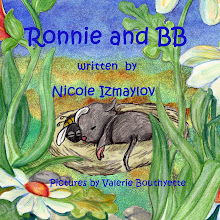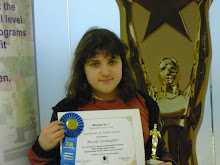At the insistence of several of my peers, I've decided to do a series entitled How to Write a Picture Book (HTWAPB)!
The first thing you need to do is decide to write a picture book. Now you have to decide something very important. There are basically three very common types of picture books. First, extremely simple ones for very young readers, usually ones meant to teach something, that sometimes follow a simple plot with little to no details i.e.
(1) "A is for apple, B is for bread; C is for Cutie Cat curled up on the bed."
Or:
(2) "1 bag of flour, 2 cups of sugar, 3 eggs, 4 sticks of butter . . . count, count, count, you made a cake!
Then, there are more "advanced" books, often with "cute" or "cartoony" illustrations, that follow a basic plot with many details that kids can easily connect with i.e., It was Elmo's birthday! Everyone was very excited. Elmo wondered what present he would get. The day started out beautifully. The sunlight streamed in from the window. Oh boy! thought Elmo. Mama Monster came in with a big birthday cake. “Happy birthday, little Monster,” she said. [etc.etc.]
Finally, there are the very advanced picture books, often with much more serious artwork, that usually tell a serious, very advanced plot and use the pictures as a means to express powerful images. These advanced ones are the ones you see about historic events, heritages (like the famous African-American “flying” picture books), and things like that.
But there’s an additional fourth category that is not so common. This fourth category consists of poetry picture books. These tend to fall somewhere between the second and third categories. Then is the fifth category of nonsense or novelty books. Nonsense books are silly (meant in a complimentary way, of course)rhyming books like those by Theodore Geisel, which usually fall between the first and second categories, and novelty books are those with “tricks,” like holographic pages, shiny stickers, coloring pages included, etc., that also typically fall between the first and second categories. From these five categories, one would first choose which one to do. Then the proper subject matter can be chosen.
First, you could pick between the first three categories, then maybe also add one of the last two. Theoretically, The Cat in the Hat is a Category 2 Nonsense Book (or Category 1, depending on how you look at it).
What category are you looking to put your book in?
~Nicole Izmaylov
Subscribe to:
Post Comments (Atom)





What a terrific idea! I hope you clone a lot of authors.
ReplyDelete